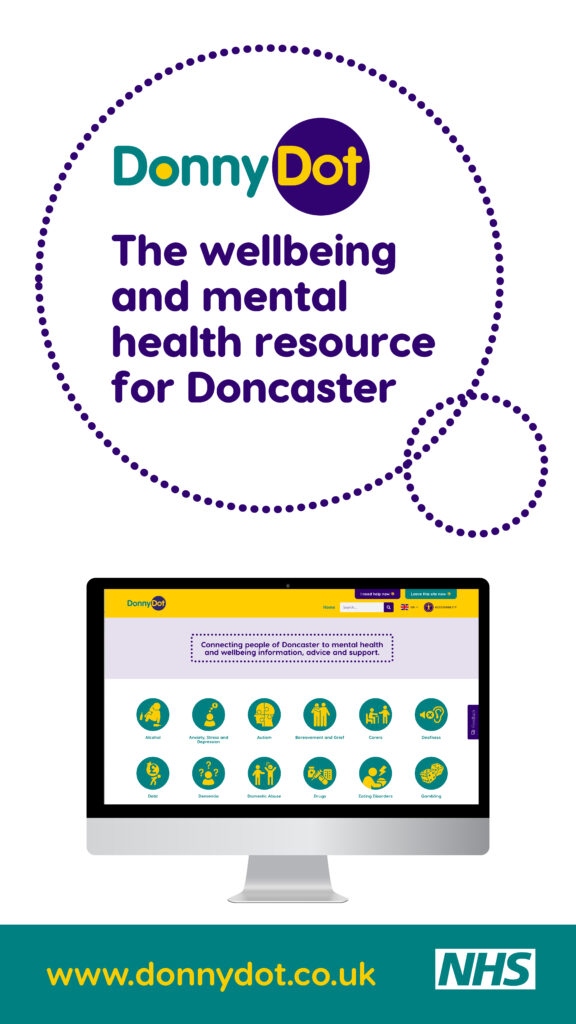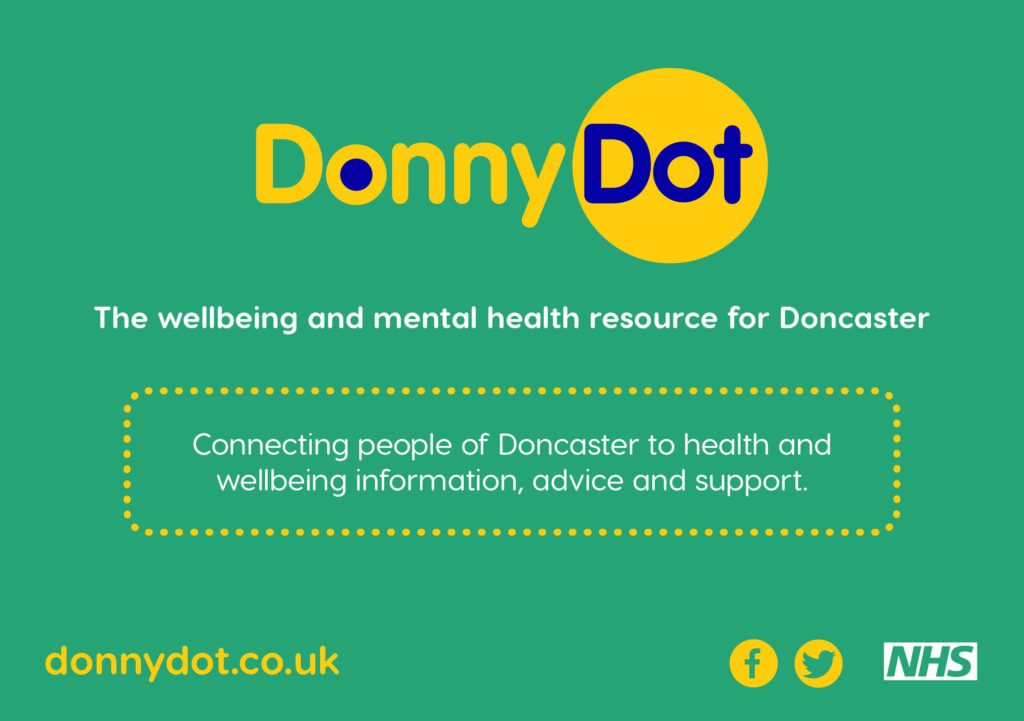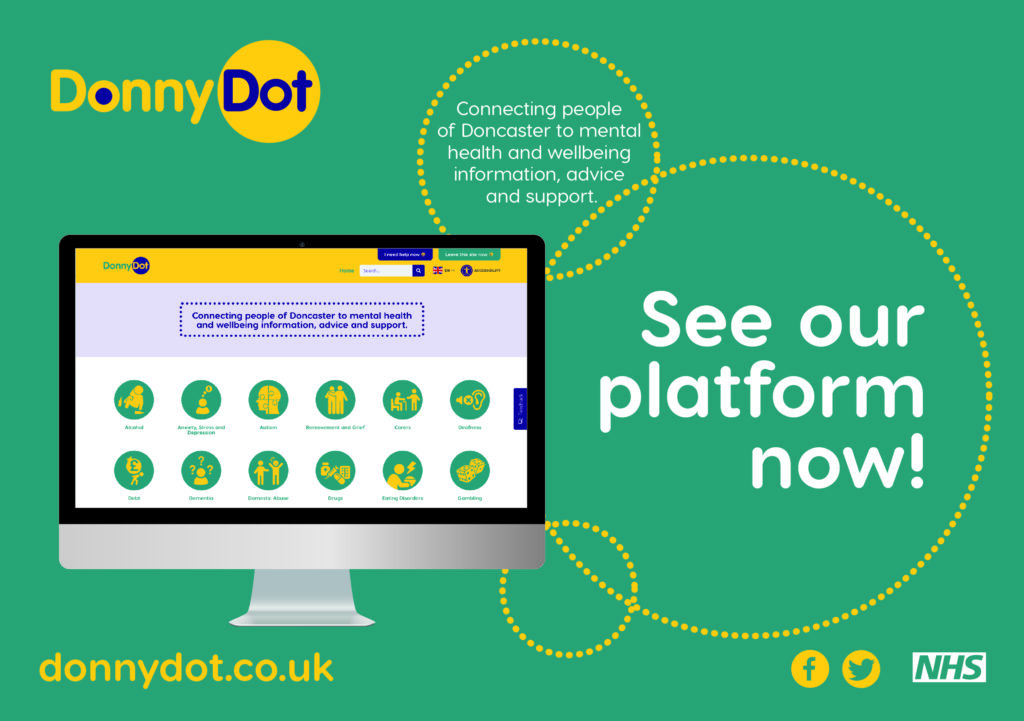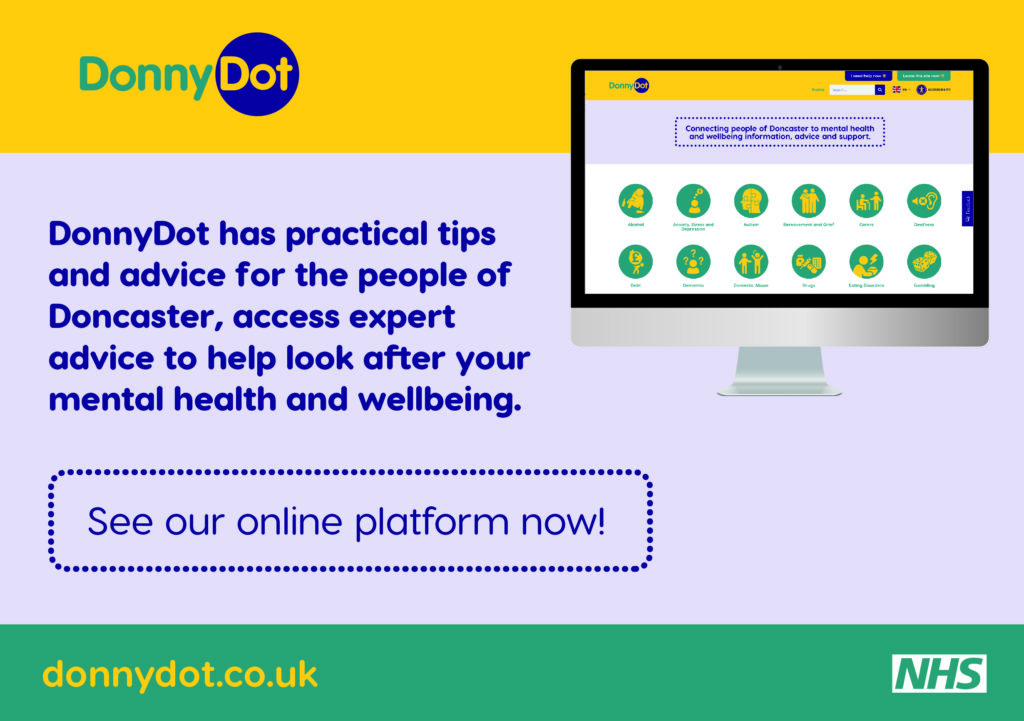Welcome to the DonnyDot Toolkit
DonnyDot is an online platform which has been developed to provide a range of verified practical advice and accurate contact details for local, national and online mental health and wellbeing services in Doncaster.
The platform has been developed and designed to make it as easy as possible for people living in Doncaster, whether they are in need themselves or for someone who is concerned about someone else, to engage with the online platform enabling them to find the right and most relevant information they need all in one place, as quickly as possible.
To support connecting people living in Doncaster to the platform we have created a series of assets. We want to encourage you to download and use the downloadable assets to actively promote DonnyDot via your communication channels – helping us to raise awareness of the online platform.
Wellbeing is having both an awareness of your emotions and the ability to manage and express those
feelings in a healthy manner – an ability to manage the normal stresses of life and work productively. It includes having both good mental and physical health, high life satisfaction, and a sense of meaning.
More generally, well-being is just feeling good about yourself and your life.
Mental Health is made up of our emotional, psychological, and social wellbeing. It affects how we think, feel, and act. It also helps determine how we handle stress, relate to others, and make choices. Mental health is important at every stage of life, from childhood and adolescence through adulthood. It can be negatively impacted by such things as living in a difficult marriage, struggling with aging parents, or poor work/life balance.
Support to deal with life’s challenges is important in providing the basis for good mental health and
wellbeing. Dealing with a variety of everyday life challenges successfully can make the difference between coping and not.
Wellbeing is having both an awareness of your emotions and the ability to manage and express those
feelings in a healthy manner – an ability to manage the normal stresses of life and work productively. It includes having both good mental and physical health, high life satisfaction, and a sense of meaning.
More generally, well-being is just feeling good about yourself and your life.
Mental Health is made up of our emotional, psychological, and social wellbeing. It affects how we think, feel, and act. It also helps determine how we handle stress, relate to others, and make choices. Mental health is important at every stage of life, from childhood and adolescence through adulthood. It can be negatively impacted by such things as living in a difficult marriage, struggling with aging parents, or poor work/life balance.
Support to deal with life’s challenges is important in providing the basis for good mental health and
wellbeing. Dealing with a variety of everyday life challenges successfully can make the difference between coping and not.
Following several initiatives, conversations in the community and feedback, it became clear that people in Doncaster needed a reliable online platform where they could go to get trusted and verified information to support them with their mental health and wellbeing.
The platform has been developed and designed to make it as easy as possible for people living in
Doncaster, whether they are in need themselves or for someone who is concerned about someone else, to engage with the online platform enabling them to find the right and most relevant information they need all in one place, as quickly as possible.
The majority of people use online sources in some way to help them make decisions. DonnyDot makes this easier for people in Doncaster to get instant access to the information they need at a time to suit them.
DonnyDot has practical tips and advice, local, national and online services, organisations and groups that people in Doncaster can access for expert advice to help look after their mental health and well-being. A wide range of information is available on DonnyDot in helpful sections as follows:
- Anxiety and Stress
- Alcohol
- Autism
- Bereavement and Grief
- Carers
- Cost of Living
- Deafness
- Debt
- Dementia
- Domestic Abuse
- Drugs
- Eating Disorders
- Gambling
- Homeless
- Mental Health
- Pain Management
- Perinatal Mental Health
- Sleep
- Suicide Prevention
You can actively promote DonnyDot via your communication channels to help us to raise awareness of the online platform to people in Doncaster.
We have created the following assets that your organisation can use to support the promotion of the online platform and specific sections. You can download these using the below links
- Website Logo Buttons
- Website Banners
- Social Media Graphics
- Posters
- Section specific graphics
Logo and Buttons
Website banners
Posters
Social media or sticker graphics
This toolkit is not static and will continue to be evolved and added to, ensuring we keep the website fresh.
If there is anything you would like to see added to the toolkit, please click here.























